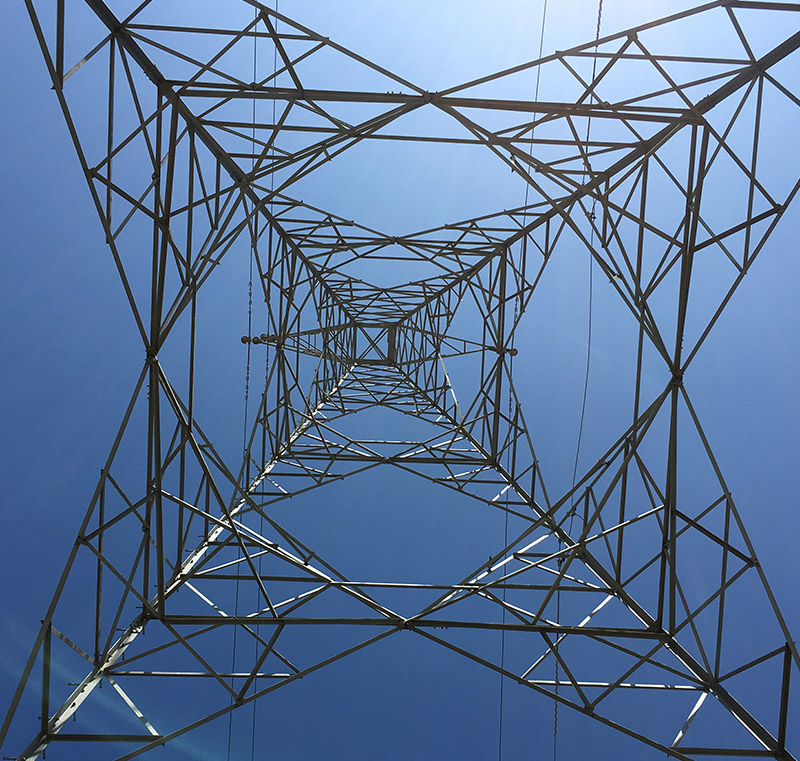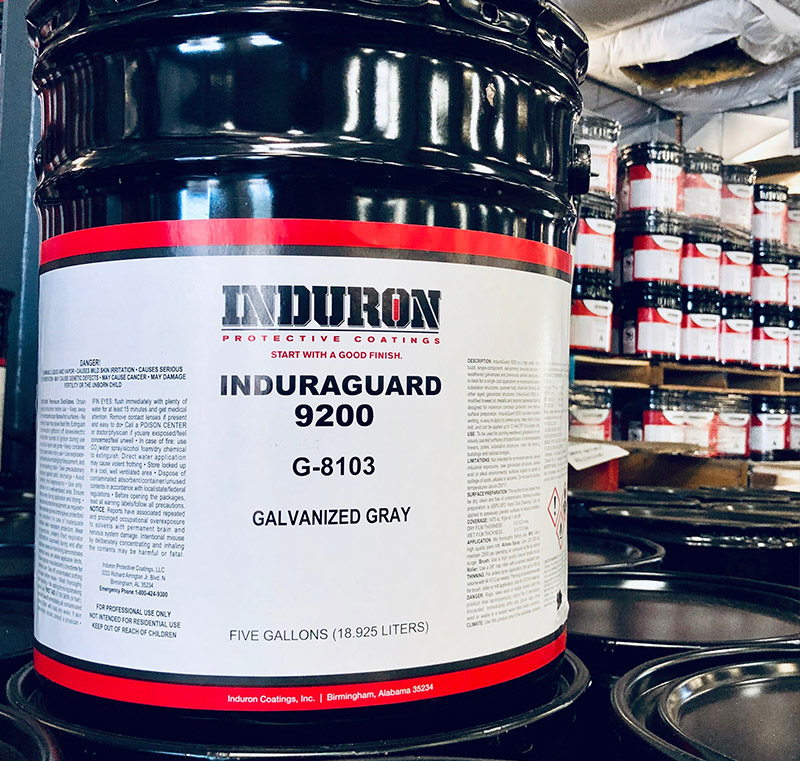By: Andy Odorzynski, Induron National Sales Manager
 Did you know that one of the largest barriers to the safety, security, and reliability of the power grid in the United States has its roots in the regulation of the railroad industry following WWI? It’s true. The misapplication of laws designed 100 years ago, for another industry, seriously impacts on our infrastructure today.
Did you know that one of the largest barriers to the safety, security, and reliability of the power grid in the United States has its roots in the regulation of the railroad industry following WWI? It’s true. The misapplication of laws designed 100 years ago, for another industry, seriously impacts on our infrastructure today.
Earlier this year, the Federal Energy Regulatory Commission (FERC) issued an exciting ruling that will finally align the interests of large investor-owned utilities with that of their ratepayers and the public good. Let’s take a look at how we got here and what has changed.
How did we get here?
During WWI, the railroad system was nationalized by President Wilson. In the process of nationalizing, and then denationalizing this massive, complex industry, many laws and regulations were put in place, which have been slowly replaced and repealed over the last century. As you can imagine, the companies operating the railroads had a distinct interest in maximizing their profits–both during nationalization and after. With federal regulation capping the profits, they would be allowed to generate from normal operations, which meant finding ways to exploit the complex government regulations surrounding them.
One of these mechanisms was to artificially inflate operating costs, thereby justifying the need to charge higher rates than are actually necessary. A relatively simple way to artificially inflate the cost of owning and operating a massive number of ferrous metal assets is to paint them…. A LOT. While the railcars may have only needed painting once a decade to keep corrosion at bay, painting rail cars all day, every day, whether they need it or not, is a fantastic way to generate large operational expenses you can then tell the federal government are a necessary part of your operation and therefore, should be marked up accordingly when the company is being compensated. It’s easy to see why a practice like this would need to be regulated.
As a result, “painting” came to be defined as a maintenance expense. It was viewed just like sweeping the floors or changing the lightbulbs–another operating expense the railroad should have planned for. They could no longer mark up this activity and charge the government (or in our modern power grid example, rate payers) for this activity. This thinking and legislation make sense at face value. But, the story gets more complicated as we move out of the railroad industry and into the power grid…
Back when FERC was established in the 1970s, one of the agency’s responsibilities was to create and provide oversight for the financial reporting requirements of investor-owned utilities. In the process of drafting this regulation, legislators carried over many of the railroad regulators’ definitions of what constitutes “Operations & Maintenance” expenses as opposed to those which can be capitalized and have their cost passed on to the ratepayers, rather than the utilities owners having to cover the cost out of what would otherwise be their profits.
The specific example we care about here is this: If a tower in our electrical grid becomes too old and corroded for continued safe operation, the utility can replace it with a new structure and capitalize the expense. This new asset is seen as an investment by the rate payers in their grid, and the cost is passed to them in the form of rate increases. However, if the utility had inspected the structure regularly, monitored it for signs of corrosion, and then coated it to stop the growth of corrosion, the inclusion of “painting” as a defined maintenance activity in the law would require that the utility bear the cost of this work as an operating expense, thus lowering their profits. Plus, painting being specifically enumerated as a task that MUST be categorized as maintenance created an environment in the energy industry where the very idea of extending asset life with coatings was viewed as a “misuse of funding.” Utilities were motivated to “operate to failure” thus ensuring they squeezed every drop of usefulness out of an asset for the rate payers before it was retired. There are very real consequences of this misalignment between the spirit of the law (protecting rate payers from fraud) and the letter of the law (instructing utilities NOT to extend the life of their assets).
Operations managers at utilities throughout the country have been frustrated by the requirement to operate assets to the point of needing to replace them. The sheer number of aging towers in this country is simply too large to replace in a timely manner. There is no stable future for the American (or global, for that matter) electrical grid without coatings. Beyond the wasted cost, we lack the construction capacity to possibly replace these assets quickly enough.
This practice lowers the reliability of our grid, making it more likely for poorly-maintained or corroded assets to fail. We must remember that these towers are made of steel and reinforced concrete foundations. If we keep corrosion at bay, and they don’t get hit by a tornado, they really do not have a top end to their service life. In fact, with proper maintenance these structures can exist indefinitely.
 With the cost of applying Induron’s Induraguard 9200 running at about one-tenth of the cost of replacing a tower, it is clearly the better financial decision. Looking beyond the finances, rule number one of environmental sustainability is to use what you have as long as you can. It certainly has a lower impact on the environment if one coat of paint is applied, as opposed to disposing of an existing asset only to mine, forge, galvanize, transport, and install a new one for the exact same purpose. If you are like me, as you get into the details, it feels crazy that we haven’t been coating these structures over an accounting law, right?!
With the cost of applying Induron’s Induraguard 9200 running at about one-tenth of the cost of replacing a tower, it is clearly the better financial decision. Looking beyond the finances, rule number one of environmental sustainability is to use what you have as long as you can. It certainly has a lower impact on the environment if one coat of paint is applied, as opposed to disposing of an existing asset only to mine, forge, galvanize, transport, and install a new one for the exact same purpose. If you are like me, as you get into the details, it feels crazy that we haven’t been coating these structures over an accounting law, right?!
What has changed?
Pacific Gas & Electric undertook to change this situation. They made the case to FERC that the proper use of protective coatings to extend the life of an asset is uniquely different from, say, painting the parking bollards. They argue it is not simply aesthetic or routine maintenance when the coatings applied add something fundamentally new to the structure, which extends the operating life of the asset. The question was finally asked: “Why should the rate payer or the environment be asked to bear the cost of a new tower when coatings can be used to keep the one we already have operating indefinitely at a much lower cost?”
As a result, in Docket No. AC21-153-000, FERC made a ruling allowing PG&E to capitalize the cost of its painting program. The ruling states, in part:
“We find that PG&E has provided information demonstrating that its Tower Coating Program costs can be capitalized. The Commission has previously allowed utilities to treat the addition of minor items of property that previously did not exist as substantial additions and to capitalize the associated costs, when the costs extend the useful lives, operating capacity, or efficiency of the associated retirement units Based on PG&E’s representations that these first-time activities will extend the lives of the assets beyond their original estimated useful lives, as supported by PG&E’s provision of extensive technical data, and its commitment to perform depreciation studies to incorporate the new service lives of the plant assets, we find that PG&E satisfies the requirements of EPI 10(C)(1) and may capitalize the Tower Coating Program costs as substantial additions”
In the ruling, FERC notes that similar allowances have been made for other large utilities like Georgia Power and Southern California Edison. This ruling will provide a much-needed precedent and framework for other utilities to make the case that they have a responsible coatings program, which can make a substantial addition to the existing structure and extend its life by 20 years or more. This ruling is a huge win for ratepayers and the public at large who depend on the reliable operation of our electrical grid.
We are enormously excited to help utilities around the country work through the tasks of surveying their structures and writing the specifications, which will ensure Induraguard 9200 is protecting these structures for decades of service life to come.
Contact Induron for Extreme Asset Protection
The Induron approach to asset protection is the lowest applied cost per square foot per year, and we can calculate the cost based on experience and proven results. An experienced Induron representative can help you set up an asset protection program that will extend the life of your T&D assets and attain a fully protected grid! Contact us today for more information.
